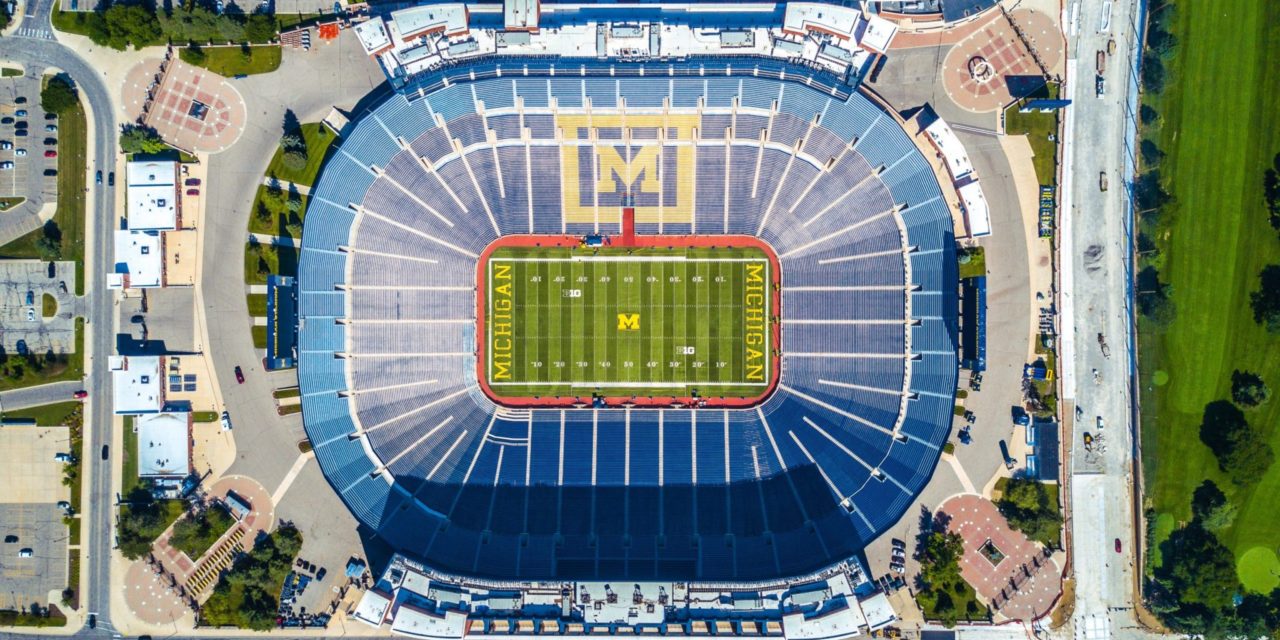By JOHN CASSILLO
Source: tvrev.com, September 2020
College football’s 2020 season will be a strange one, with conference starting on different dates throughout the fall and constant concerns around testing remaining a narrative around the games.
Among the “Power Five” conferences, the ACC and Big 12 started back up this past week, and the SEC will begin play during the weekend of September 26. As we learned on Wednesday, it appears the Big Ten will be back on the field as well, but not until October 24. TBD on whether the Pac-12 joins them (though there is growing call to do so).
Obviously the more teams — especially in power conferences — that are playing, the more premium inventory there is for TV networks and advertisers to put in front of audiences. Last week (September 7-13), college football accounted for the third-most ad impressions of any show on TV, behind the NFL and NBA (according to iSpot.tv). Still, with fewer games airing than normal, these are far from complete weekends of college football. For reference, the same week (September 9-15) saw more than 2x more impressions — 4.7 billion last year vs. 1.8 billion this year — in part due to fewer games.
Though it’s only a fraction of the season, you can also see a big shift in who watched this past weekend vs. who watched the 2019 regular season and postseason.
Using results from Inscape, the TV data company with insights from a panel of more than 16 million active and opted-in smart TVs, we can see the top 20 DMAs (by percentage of TVs watching) for college football games last season, and compare them to last weekend. Last season, 9.5 of the top 20 DMAs were in the SEC’s footprint (one of those — Mobile/Pensacola — is a split between the SEC and ACC) — and nine were in Big Ten territory. This past weekend, five were SEC, five were ACC, four were Big 12 and four were Big Ten.
While not the end-all measure for biggest television draws, a look at the most valuable college football programs in the country (from the Wall Street Journal, via IUPUI’s Ryan Brewer) last year shows just how many of the top programs currently aren’t on TV right now. According to that list, 17 of the top 20 have yet to start their seasons. When the SEC gets going, that’ll be 12 of 20 in action. The Big Ten makes up seven of the other eight spots.
A Big Ten return means something mildly resembling a “normal” college football season from late October through early December. It’s a lifeline for networks like FOX and ESPN, which rely heavily on top college football game inventory in fall. It’s also a lifesaver for the Big Ten Network, which hasn’t been able to air live games in any sport since mid-March.
Of course, all of this also assumes that every team can stay on the field. The ACC, Big 12 and American Athletic Conference (among others) have already seen several games pushed around this fall due to COVID-19 concerns, and those leagues at least built in flexibility with early September starts. The Big Ten (and Pac-12) won’t have the same wiggle room with a shorter timeframe in place for games. Wednesday already showed just how tenuous all of this is after Maryland reported a near-8% positive rate among athletes just last week.
As has been the case with much of TV in 2020, everything here will have to be reevaluated on a week to week basis.

